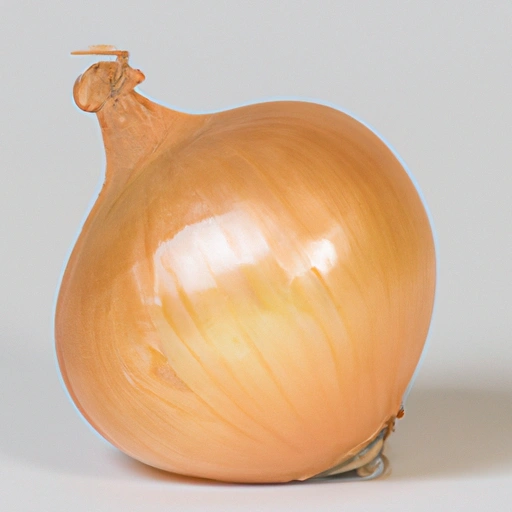Yellow Onion
Description

Yellow onions, sometimes referred to as brown onions due to their tawny skin, are a staple in kitchens worldwide. These onions are medium to large in size and have a strong, pungent flavor that becomes milder and sweeter upon cooking. They are encased in a dry, papery skin which, once removed, reveals a firm, white flesh with layers of golden to pale-yellow rings.
Common uses
Yellow onions are commonly used as a foundational flavor in many dishes, contributing a depth of flavor to soups, stews, sautés, and sauces. They are also often utilized raw in salads, sandwiches, and as a garnish.
Nutritional value
Calories
A medium-sized yellow onion (about 110g or 4 oz) contains approximately 44 calories (184 kJ).
Protein
Each onion has about 1.2 grams (0.04 oz) of protein.
Fat
Yellow onions are low in fat, with only 0.1 grams (0.0035 oz) per medium onion.
Carbohydrates
They contain about 10.3 grams (0.36 oz) of carbohydrates, with 1.9 grams (0.07 oz) of fiber and 4.7 grams (0.17 oz) of natural sugars.
Vitamins
They are a good source of vitamin C and folate, and contain small amounts of vitamin B6 and other B vitamins.
Minerals
Minerals in yellow onions include potassium, phosphorus, magnesium, and calcium.
Health benefits
Yellow onions are known for their health benefits, including their potential to lower the risk of heart disease, improve bone density, and possess anti-inflammatory properties. They are also rich in antioxidants, helping to combat oxidative stress in the body.
Potential risks
While yellow onions are generally safe for consumption, they may cause heartburn or digestive discomfort in some individuals. Furthermore, those with an onion allergy or sensitivity should avoid them.
Common recipes
Yellow onions are featured in a wide array of dishes, from French onion soup to Indian curries, Italian pasta sauces, and American burgers.
Cooking methods
These onions can be sautéed, caramelized, grilled, roasted, or used raw. They are versatile and respond well to various cooking techniques.
Pairing with other ingredients
Their robust flavor pairs well with hearty meats, root vegetables, herbs like thyme and bay leaves, and acidic ingredients like tomatoes and vinegar.
Summary
The yellow onion is a culinary powerhouse, appreciated for its versatility and depth of flavor. With its global presence in a multitude of recipes and cuisines, this ingredient not only enhances the taste of food but also contributes to a balanced diet with its range of vitamins and minerals.